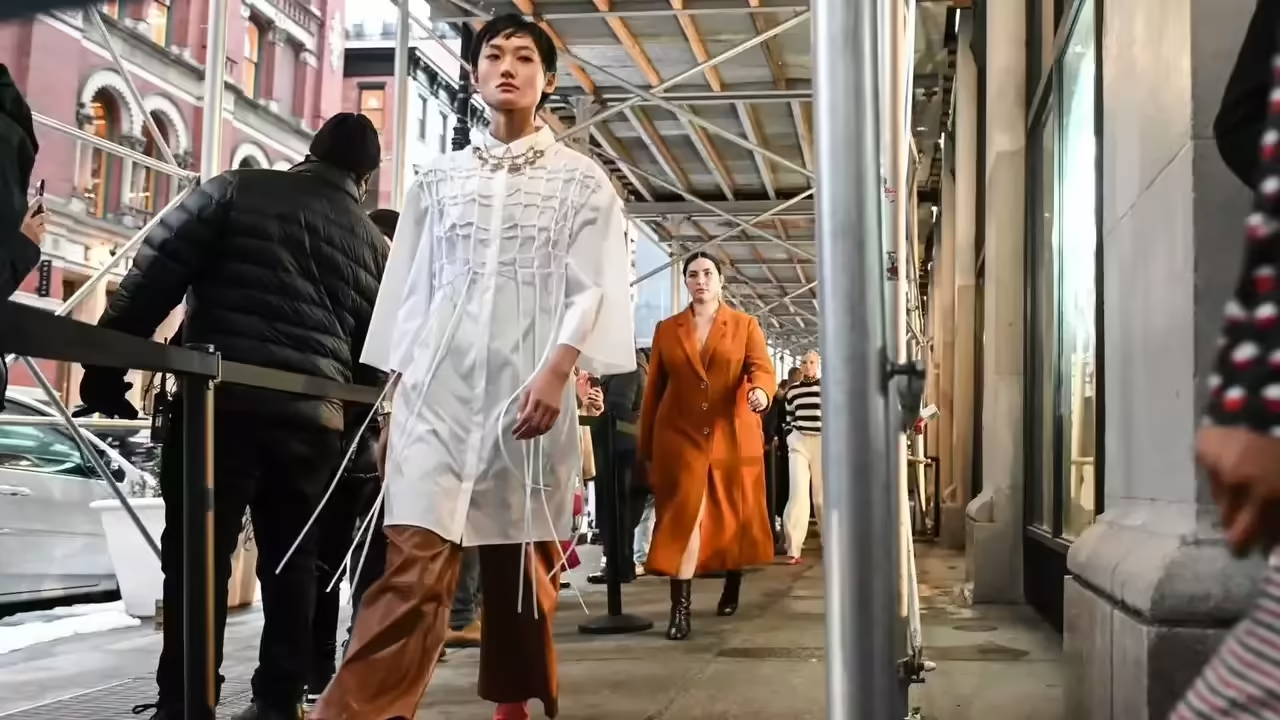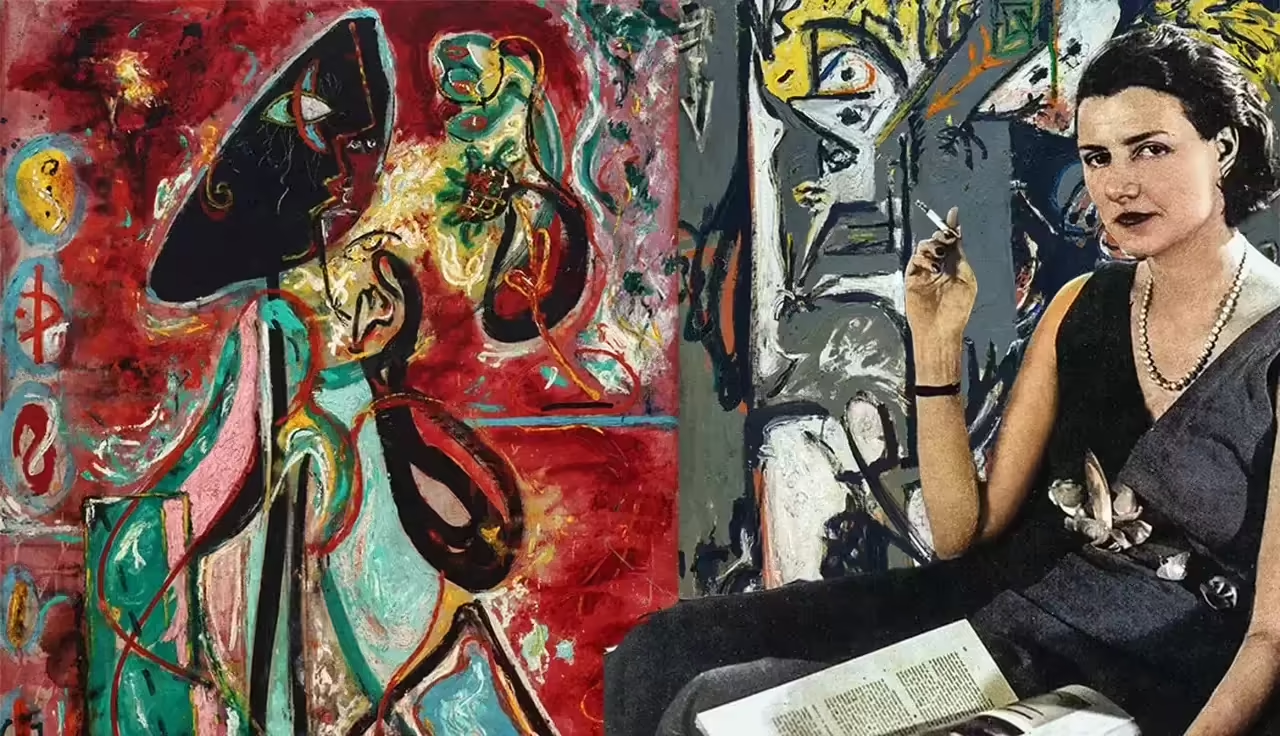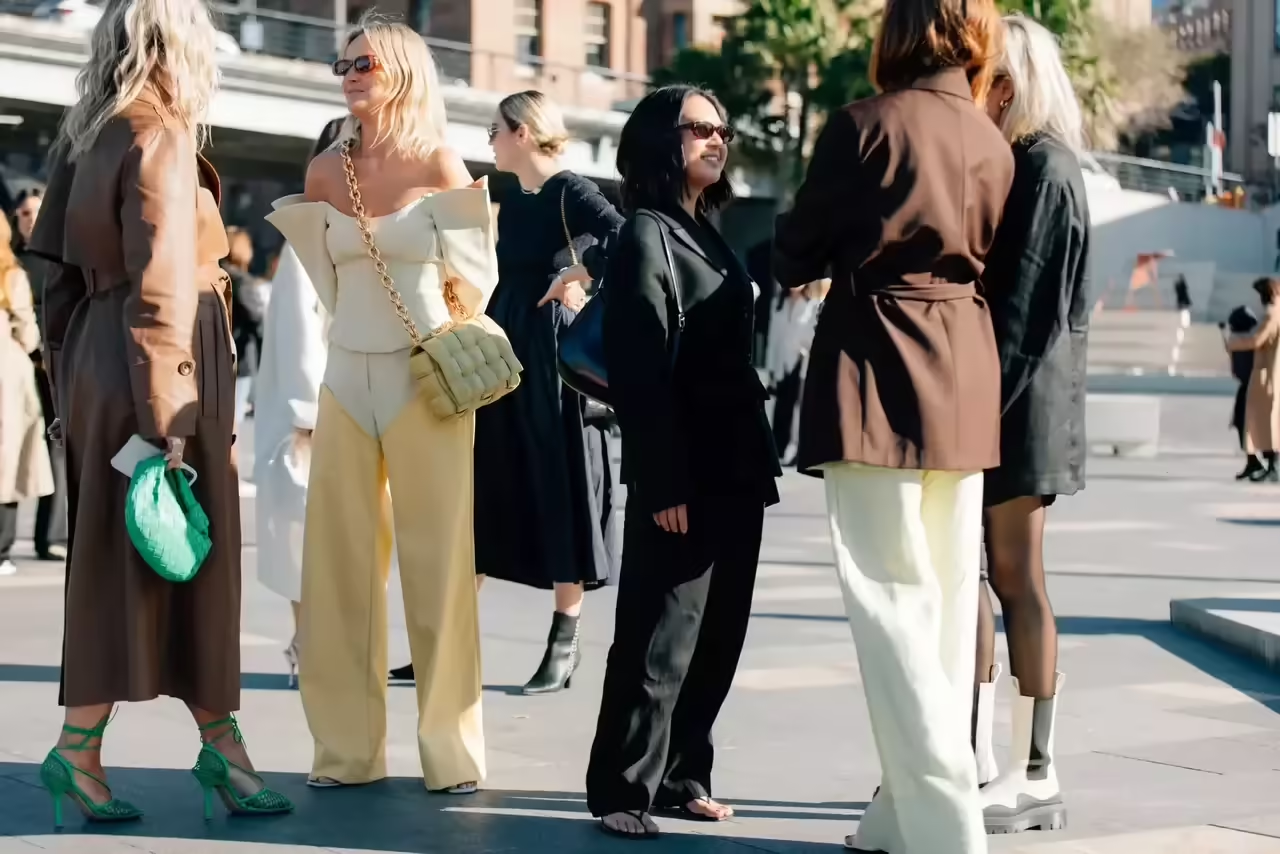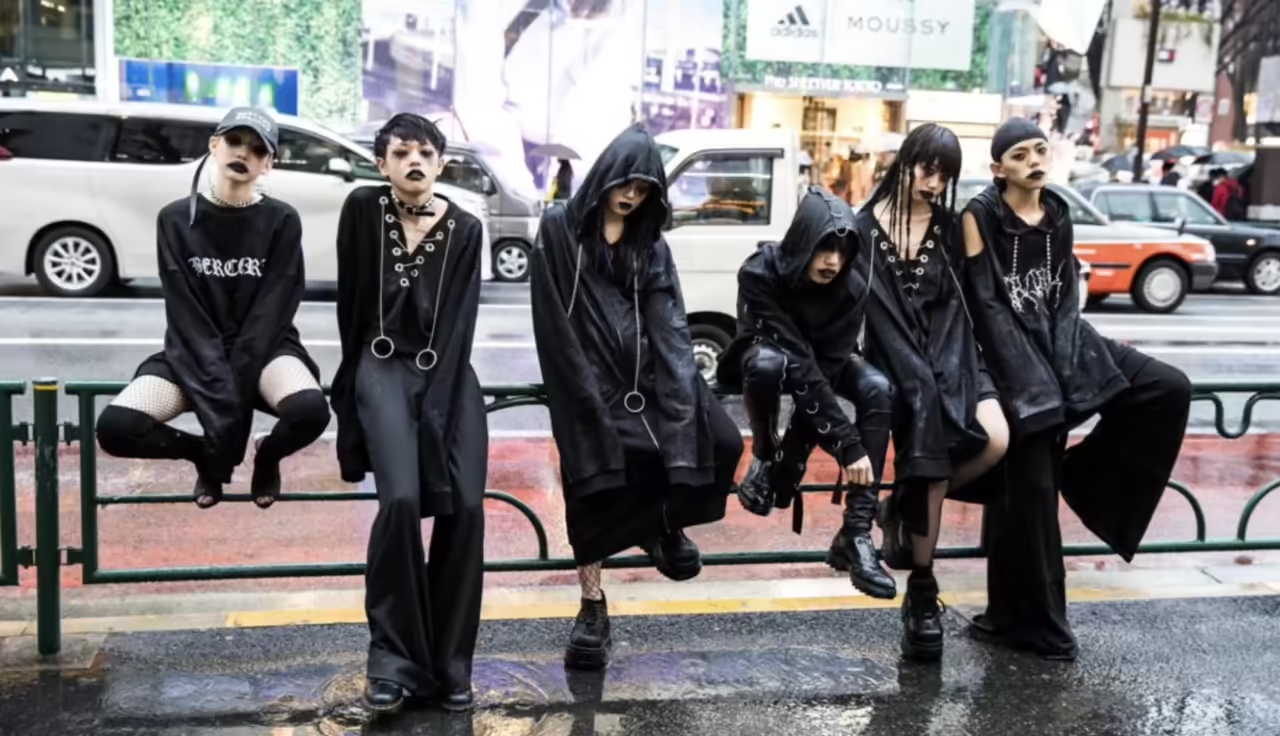
Asian fashion, a fascinating melting pot of traditions, innovations, and unique styles, presents itself as a vast territory to be discovered. This first segment aims to immerse us in the profound diversity that characterizes fashion in Asia, a continent that goes beyond geographical borders to embrace a spectrum of cultures, styles, and creative expressions.
Brief History of Asian Fashion and its Global Influence
To comprehend the magnitude of Asian fashion on the global stage, it is essential to explore its historical roots and evolution over centuries. From exquisite traditional garments that have endured through time to avant-garde contemporary trends conquering international runways, Asian fashion has played a crucial role in shaping global aesthetics. This historical journey will allow us to appreciate how Asian fashion has successfully merged its rich cultural heritage with modernity, creating a lasting influence in the world of fashion.
Exploring Current Trends in Asian Fashion
Always dynamic and ever-evolving, Asian fashion presents a fascinating panorama of trends that set the pace on the international scene. From the bustling streets of Tokyo to glamorous runways in Seoul, Asia stands as a hub of innovation and style. In this article, we will delve into the most popular fashion trends in Asia today, exploring the vibrant expressions that define the continent’s creative pulse.
Highlighted Trends:
Revolutionary Streetwear: The streets of cities like Tokyo and Seoul set the stage for cutting-edge streetwear. Emerging brands and independent designers fuse traditional elements with urban styles, creating garments that defy conventions and define a new aesthetic.
Japanese Minimalism: The influence of Japanese minimalism endures, characterized by clean lines, neutral colors, and functional designs. Brands like Comme des Garçons and Issey Miyake continue to lead this movement, attracting those seeking elegance in simplicity.
Eco-Friendly Chic: With a growing focus on sustainability, Asian designers are leading the way in eco-friendly fashion. From recycled materials to ethical production practices, brands like Stella McCartney and Reformation have Asian counterparts embracing sustainable fashion with style.
Featured Brands and Designers:
Uniqlo (Japan): Globally recognized, Uniqlo has successfully fused functionality with style, offering high-quality basics that embody Japanese elegance.
Chitose Abe (Sacai, Japan): Japanese designer Chitose Abe has gained renown for her unique creations, blending contrasting elements and challenging conventional expectations.
Jennie Kim x HERA (South Korea): BLACKPINK member Jennie Kim has ventured into design by collaborating with the brand HERA. Her line reflects contemporary fashion and the glamour characteristic of K-pop.
Exploring current trends in Asian fashion is delving into a fascinating journey of creativity, where tradition meets modernity, and innovation constantly redefines stylistic boundaries. These trends and designers are not only making an impact in Asia but are also setting the pace for global fashion.
Japanese Style: A Deep Dive into Street Fashion and the Influence of Pop Culture
Japanese style has transcended borders, becoming a beacon of innovation and personal expression. Particularly, Japanese street fashion has emerged as a cultural phenomenon, setting trends and challenging norms of conventional fashion. This segment dives into the fascinating amalgamation of creativity and self-expression that defines Japanese street fashion, while also exploring the intrinsic influence of Japanese pop culture in this vibrant stylistic universe.
Japanese Street Fashion: Beyond the Runways
Street fashion in Japan unfolds as a constantly transforming canvas, where individuality and experimentation are celebrated. Neighborhoods like Harajuku in Tokyo are emblematic of this scene, where avant-garde youth become authentic style icons. The fusion of traditional and contemporary styles, along with the incorporation of elements from pop culture, gives rise to a unique palette of street fashion that challenges expectations.
From the colorful and eccentric decora style to the more minimalist and androgynous genderless kei, Japanese street fashion is characterized by its diversity and ability to break stylistic barriers. Independent brands and emerging designers are vital in fueling this scene, providing fresh and unique alternatives that challenge conventional fashion norms.
Influence of Japanese Pop Culture on Fashion: From Manga to the Runway
Japanese pop culture, with distinctive elements like manga, anime, and J-pop music, has left a profound imprint on the country’s fashion and beyond. Contemporary Japanese designers often incorporate motifs and aesthetics from these forms of entertainment into their creations, blending the fantastical with the modern.
Collaborations between designers and anime franchises, for example, are increasingly common, leading to collections that celebrate and reinterpret the visual and narrative elements of these popular works. This marriage of pop culture and fashion is not limited to Japan but has become a global influence, resonating with designers and consumers worldwide.
K-Fashion: Exploring the Impact of Korean Fashion Worldwide
Korean fashion, known as K-Fashion, has emerged as a powerful force on the global stage, capturing the attention of fashion lovers and enthusiasts worldwide. This phenomenon has not only transformed the perception of fashion but has also influenced international pop culture, with K-pop style being one of its main drivers.
The K-Fashion Revolution: Beyond Korea’s Borders
The meteoric rise of Korean fashion is a testament to the creativity and innovation emanating from the Korean peninsula. Brands like “Seoul Fashion Week” have brought Korean fashion to the forefront, attracting the attention of international designers and establishing Korea as a trendsetting hub.
The aesthetic of K-Fashion is known for its unique blend of tradition and modernity. Korean designers have successfully fused cultural and contemporary elements, creating pieces that are both avant-garde and rooted in Korea’s rich heritage. From reinvented Hanboks to the incorporation of traditional fabrics into modern designs, Korean fashion celebrates cultural identity in a unique way.
K-pop Style: A Driving Force in Global Fashion
If there is a phenomenon that has significantly contributed to the global impact of Korean fashion, it is the rise of K-pop. Musical groups like BTS, BLACKPINK, and EXO have not only conquered the music industry but have also left an indelible mark on the world of fashion.
K-pop style is bold, eclectic, and unafraid to experiment with fashion. From futuristic outfits to vibrant color combinations, K-pop icons have set trends that resonate worldwide. International brands have recognized the global appeal of these groups and have collaborated with them, further propelling the expansion of Korean fashion.
Influence on Global Popular Culture
Korean fashion extends beyond clothing; it has permeated other aspects of global popular culture. Korean makeup, known for highlighting natural beauty, has gained followers worldwide. Korean skincare brands have also achieved international fame, redefining beauty and personal care standards.
Moreover, sustainable fashion has found an ally in the Korean industry, with designers and brands committed to ethical and ecological practices. This approach has resonated especially among the younger generation, seeking brands that not only offer attractive fashion products but also advocate for sustainability and social responsibility.
The Future of K-Fashion on the Global Stage
The K-Fashion phenomenon has proven to be more than a passing trend; it is a cultural movement that continues to evolve and define global fashion standards. As Korea’s influence in pop culture and fashion continues to expand, new talents, innovative styles, and international collaborations are expected to further enrich the landscape of Korean fashion.
Traditional Asian Fashion: A Journey into Ancestral Elegance and its Contemporary Transformation
Traditional Asian fashion, deeply rooted in the rich cultural heritage of each country, has been an endless source of inspiration for designers and fashion enthusiasts worldwide. From exquisite Chinese qipaos to vibrant Indian saris and elegant Korean hanboks, traditional Asian attire has captured attention with its intricate craftsmanship and cultural symbolism.
China: The Beauty of Qipao and Millennia-old Influence
In China, the qipao, also known as cheongsam, is a symbol of elegance and grace. Originating from the Qing Dynasty, the qipao has evolved over time, maintaining its essence while adapting to contemporary trends. Chinese designers have revitalized this iconic attire, incorporating modern cuts, innovative fabrics, and unique details. The contemporary adaptation of the qipao has taken this traditional garment to international runways, merging classical sophistication with modern fashion.
India: Saris and Lehengas: A Display of Colors and Textures
Traditional Indian fashion is a visual feast of colors and luxurious fabrics. Saris, with their intricate pleats, and lehengas, with their exquisite embroidery, reflect the cultural diversity of the country. In contemporary fashion, Indian designers have elevated these traditional garments to new heights. Unexpected fusions of styles, experimentation with silhouettes, and the introduction of modern techniques have led to the creation of pieces that maintain the authenticity of traditional Indian attire while adapting to current fashion preferences.
Korea: Reimagined Hanboks for the 21st Century
Korean hanboks are known for their clean lines and vibrant colors. While historically used for ceremonial occasions, contemporary fashion has taken the hanbok beyond traditional events. Korean designers have reinterpreted the hanbok, incorporating modern elements such as asymmetrical cuts, innovative patterns, and bold color combinations. This fusion of the old and the new has resulted in a unique fashion that celebrates Korean cultural identity in a fresh and exciting way.
Contemporary Adaptation: Merging the Ancient with the New
The contemporary adaptation of traditional Asian fashion not only involves the incorporation of modern elements into clothing but also the redefinition of how these garments are perceived and used. Globalization has allowed these creations to reach international audiences, fostering a greater appreciation for cultural diversity and the unique craftsmanship of each region.
Unique Accessories and Details: Highlighting Singularity in Asian Fashion
Asian fashion stands out for its meticulous attention to details and the incorporation of unique accessories that elevate attire to an expression of art. These elements not only complement the clothing but also tell profound stories about the culture, history, and traditions of the region. Below, we will explore some of the most distinctive accessories and details in Asian fashion.
Japanese Kanzashi: Hair Flowers as Works of Art
In Japan, kanzashi are hair accessories that have evolved from simple combs into true works of art. Handcrafted with materials such as silk and tortoiseshell, these accessories often feature intricate floral designs. Each flower represents something different: chrysanthemums for longevity, cherry blossoms for ephemeral beauty, and plum blossoms for perseverance. Kanzashi not only beautify the hairstyle but also honor the connection with nature and the seasons.
Chinese Tassels and Knots: Symbolism and Elegance
In Chinese fashion, tassels and knots are distinctive elements used in a variety of garments and accessories. Tassels, with their hanging threads, symbolize good luck and prosperity. Chinese knots, especially the eternity knot, are considered charms for good fortune and eternal love. These details not only add elegance to the attire but also carry centuries of cultural meaning.
Maang Tikka and Nath in Indian Fashion: Elegance on the Forehead and Nose
Indian fashion is known for its accessories adorning the forehead and nose. The maang tikka, a piece that adorns the center of the forehead, adds a touch of grace and essentially completes the traditional outfit. On the other hand, the nath, a nose ring, can range from delicate models to more elaborate and opulent pieces. Both accessories are emblematic of the cultural richness and splendor of Indian fashion.
Gasaengi in Korea: Windows of Tradition in Modern Attire
In Korea, gasaengi are unique accessories placed on the front of the hanbok, just below the neck. These decorative elements, often embroidered or crafted with gold thread, add a touch of elegance to traditional attire. While originally symbols of status, they have become cherished details connecting modern fashion with Korea’s rich history.
Jade Jewelry in China: Symbol of Longevity and Prosperity
Jade jewelry is a key element in Chinese fashion, with deep meanings that go beyond aesthetics. Jade is considered a precious stone symbolizing longevity, prosperity, and good fortune. Bracelets, necklaces, and jade earrings not only beautify the wearer but also convey wishes for well-being and success.







